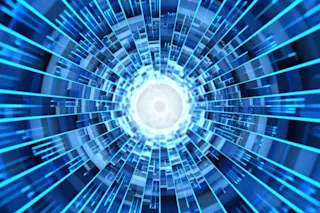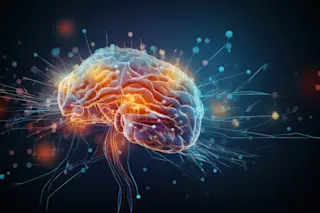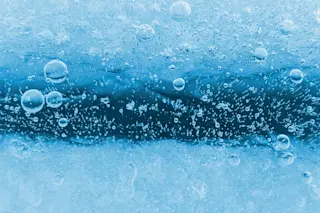X-rays pass easily through biological materials to provide unprecedented insight into the internal structure of everything from biological structures in living cells to broken bones in damaged bodies.
But biologists face something of a dilemma in making these images. The ionizing nature of X-rays can break chemical bonds, damage living cells and distort the biological structures under investigation. So biological imaging experiments must balance the need for clear images against the inevitable damage X-rays cause. That boils down to finding ways of increasing resolution while reducing exposure.
“New experimental methods to allow for low-dose, high precision measurements are urgently needed,” say Justin Goodrich at the Brookhaven National Laboratory in Upton and colleagues.
Clear Image
As luck would have it, they have pioneered an innovative approach to X-ray imaging that uses the quantum properties of light to produce images with greater resolution with lower doses of radiation, which has the potential to transform medical imaging.
So-called quantum imaging exploits the unique properties of quantum entanglement and correlation to gather information about objects with higher resolution and reduced noise. Unlike classical imaging, quantum techniques allow researchers to bypass some limitations of traditional optics, such as the diffraction limit and signal-to-noise constraints.
These techniques have been used for some time at optical wavelengths. But the X-ray regime has proved harder to tame because the technologies for producing and detecting entangled photons are much less mature. Now the Brookhaven team has taken the first steps to change that.
Quantum imaging works by creating a stream of entangled photons and allowing one of each pair to interact with the object in question. By then detecting both photons and studying the correlation between them, it is possible to build an image of the target with enhanced resolution.
The extra resolution is the result of lower background noise because any photons that don’t arrive as a pair can be ignored. And because only one of the pair interact with the sample, the radiation dose is lower too.
The problem for X-ray quantum imaging is that it has been hard to produce entangled photons efficiently. They are traditionally produced by passing a high energy beam through a non-linear medium, which converts single high energy photons into pairs of lower energy photons.
Goodrich and co get around this using a synchrotron to produce 10^11 X-ray photons per second and then bouncing them off a single crystal of diamond grown artificially. In theory, this can turn a high energy photon into two lower energy, entangled photons but only when the reflecting angle and contact point in crystal structure meet specific criteria. But in practice this point is hard to achieve exactly because of imperfections in the arrangement of planes within the crystal.
But by using a specially grown crystal and by scanning the X-ray beam across the surface, Goodrich and co were able to find the sweet spot where the photon conversion process is maximized. “Multiple positions along the surface of the diamond were probed to find the area with the highest quality,” they say.
Once this was established, Goodrich and co directed the entangled pairs towards an X-ray sensitive pixel array, while ensuring that one photon interacted with the target on the way.
They then processed the results to generate images of the various targets, including a biological sample in the form of a cardamom seed. They then compared the resulting images with those recorded using classical X-ray photons and by computer simulation.
Quantum Seed
The results clearly show the potential of X-ray quantum imaging. The quantum images show more detail within the cardamom seed than classical images produced with the same number of photons. ”To our knowledge, this is the first quantum correlation X-ray imaging experiment performed on a biological object with a complex, low density internal structure,” say the researchers.
The team say this is just the first step towards significantly better images and paves the way for a number of applications. “This research sets the stage for innovative applications in quantum imaging, especially in fields where reducing radiation exposure is critical, such as in the study of sensitive biological materials,” say Goodrich and co.
“Our achievements pave the way for the development of superresolution imaging and diffraction methods, offering a novel approach to viewing complex structures with unprecedented detail and reduced dose.”
That looks promising. Expect to see the fruits of their labor in improved X-ray imaging techniques in the not too distance future.
Ref: Quantum Imaging with X-rays : arxiv.org/abs/2412.09833














